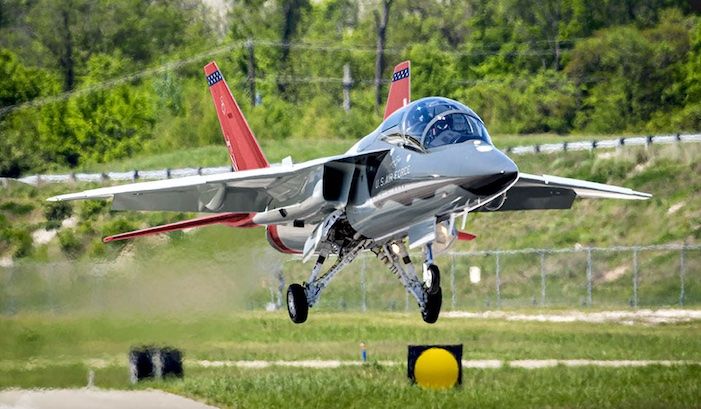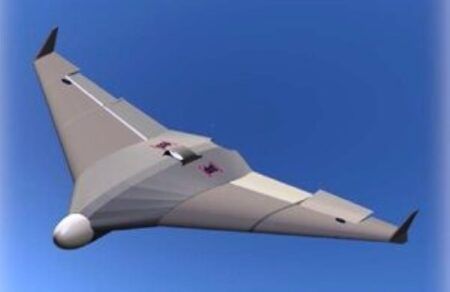Engineers in the US Air Force are using 3D CAD models and VR to certify and verify technical orders for the T-7A Red Hawk advanced pilot trainer.
The T-7A Virtual Reality (VR) Team is verifying the accuracy and usability of over 1100 maintenance tasks in a seven month period.
The Boeing and Saab-developed T-7A Red Hawk is a trainer jet that is being developed using a number of new digital engineering processes, agile software development techniques and an open architecture mission system under Boeing’s eSeries moniker. The aircraft is billed as a fully digitally-designed aircraft.
Fred Tschirner, T-7A VR team lead said, “The goal is to align with the Air Force Materiel Command Digital Campaign where the desire is to create a collaborative, integrated digital environment that guides, orchestrates, and delivers the means for each individual across the enterprise to access the data, functions and elements needed to do his or her job in a purely digital manner.
“We have 13 personnel and 3 aircraft which makes this a pretty high-risk effort and requires an out-of-the-box approach.”
Working with engineers from Boeing, the Technical Order (TO) Team was forced to look for mitigations to reduce the risk of failure. The team considered several options, to include use of prototype aircraft and use of instrumented test aircraft.
Unfortunately, nothing was acceptable based on current guidance and policy. Finally, The Boeing Company suggested the use of their VR lab.
“The idea of completing tasks that are traditionally completed on a production representative aircraft, in a virtual environment, was met with differing levels of skepticism. However, the team agreed to evaluate this opportunity with an open mind,” Tschirner said.
The T-7A TO Team evaluated the Boeing Integrated Development Center (IDC) or VR lab that is operated in St. Louis, Missouri.
“The IDC consists of multiple systems, but we focused our evaluation on the HTC Vive gaming platform. It is a relatively inexpensive platform but the capabilities of this system provides the best support for our verification effort,” Tschirner said.
The team conducted an evaluation of 11 maintenance tasks in both the virtual environment and on aircraft. These tasks consisted of non-complex such as doors and panels to complex, such as engine removal.T wo independent teams, one in the IDC and one on aircraft were established with no interaction during tests and no discussion until each element completed all tasks in their respective environments.
“We determined that due to system maturity, only non-complex tasks like opening / closing doors and removal / installation of panels that do not have wires / coaxial cables attached can be completed at this time,” Tschirner said.
The aircraft has 144 doors and panels with around 110 of those considered candidates for virtual verification. Currently, there are between 1100 and 1287 tasks to be verified by performance. This equates to approximately 8 to 10% of the performance tasks.
The current T-7 verification schedule is very aggressive, according to Tschirner, so even using the Boeing IDC for non-complex tasks will save valuable on-aircraft time.
“We will also mitigate a portion of the program risk associated with completing time-constrained technical order certification/verification effort, and advance the Air Force initiatives regarding digital engineering,” he said.
Currently, the team has received approval to complete verification of the approximately 110 performance tasks and is working towards development of a new VR verification process. Updates to the T-7A Technical Order Life Cycle Management and Technical Order Life Cycle Verification Plans will further define and clarify these program processes.
Submittal of TO 00-5-3 policy change requests will provide recommendations toward achieving the Air Force’s vision for digital engineering, and the establishment of VR verification policy and guidance for the service.
Related Stories
T-7A Red Hawk static test aircraft takes shape
US Air Force uses remote control rooms to support T-7A flight testing
From simulator to cockpit: A guide to synthetic jet fighter training





